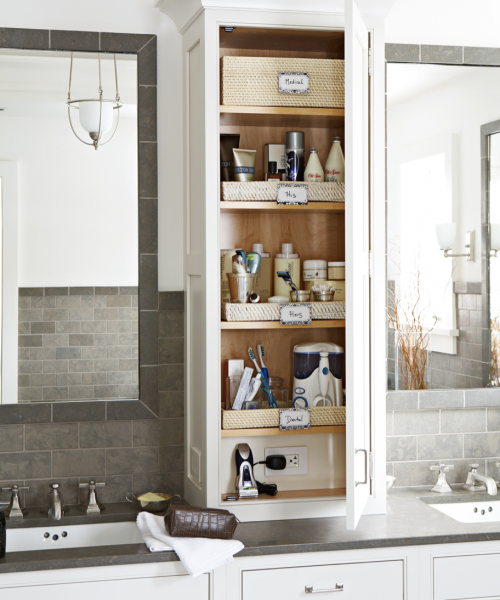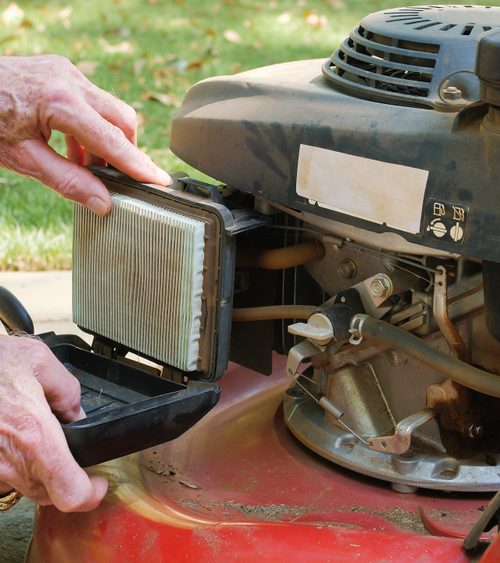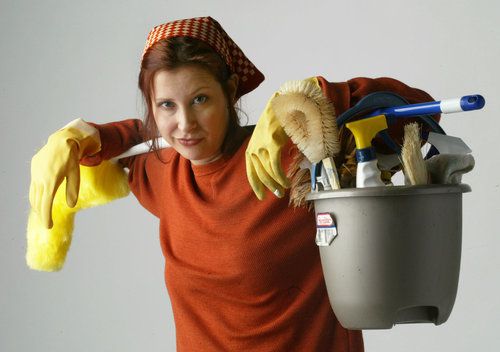By Cris Pearlstein | BHG.Com
Troy Warren for CNT #HomeGarden
Moving is stressful but, like anything else, the more you do it the better you get. Read on for all the tips, tricks, and nuggets of advice from a homeowner who has moved more times in the past decade than most of us do in a lifetime.
One morning, my family and I woke to the sound of trucks banging and beeping, and it was clear the construction of the five-story apartment building across the street was finally underway. Throughout the COVID-19 pandemic, the signs were up, warning us that the mostly empty lot would soon be transformed. But as month after month passed with no action, it was easy to forget about it. That day, though, there was no denying it anymore—excavators, diggers, and demolition balls meant it was go-time.
Normally, we wouldn’t be affected by weekday construction but our new work-from-home life changed that. After one particularly noisy week, my husband said, “I don’t know how much longer I can take this. I think we have to move.”
If we follow through on his idea, it will be move number seven in almost as many years. Luckily, packing up all our belongings is second nature to me at this point so I’m not too stressed about the possibility of it. But it wasn’t always that way.
The first few times we moved were traumatic. Packing up our entire lives into boxes, then schlepping those boxes to various places around the countryreally takes a toll—furniture gets broken, stuff gets lost, you forget what you own, it’s disorienting. But with six moves under my belt (and another looming in the near future), I’m actually pretty zen about it, and I truly believe you can be, too.
Here are all the tips, tricks, and advice I have gleaned from the many mistakes we’ve made along the way. I’m sharing my horror stories about moving to save you from living through your own. Get ready to take notes so you make moving day a little less chaotic.
1: Purge As If Your Life Depends On It
You might think you lead a minimalist life. Over the years, you’ve probably gone through your closet, drawers, cabinets, and think you couldn’t have anything else to possibly throw away. But listen carefully: you do.
Trust me when I say that each year you live in the same home, your belongings find a way to multiply. No matter how hard you try to keep that junk drawer under control, it gets wily after a while. No matter how many times you’ve gone through your kid’s room, there will always be broken pieces, missing parts, and toys they’ve aged out of long ago. And no matter how much you’ve tried to streamline your wardrobe, you will always find some pieces that don’t fit, don’t flatter, or don’t work for the life you live. I once lived in an apartment for only 5 months—after a huge purge during a previous move—and I still found stuff to get rid of. That’s just the nature of the beast.
So do what I did and start small. One day, when you have 15 minutes to kill while something is cooking in the oven, open a drawer and begin. First, look at the contents of the drawer like it’s the first time you’ve opened it. Take everything out, line it up on the counter, and take stock of what you have. When I did this with our large utensil drawer in our San Francisco apartment, I discovered I owned three whisks. I have no idea why, but I do know that unless you are a pastry chef (I am not) you do not need three whisks. Say goodbye to two and keep going.
Do you have any chipped dishes or platters? Toss them. How about small appliances you never use anymore (I’m talking to you, waffle maker)? Sell them and don’t look back. And let’s not forget the random decorations and supplies you’ve hung onto from birthday parties of years past—your kids’ school would probably appreciate a donation of beverage coolers, festive banners, disposable utensils, and chalk menu boards.
The Lesson: The less stuff you leave with, the less stuff you arrive with. It makes unpacking in your new home that much more pleasant.
2: Rethink Cardboard Boxes
It’s an undeniable fact that moving your entire life and everything you own from one place to another creates a lot of waste. There are the boxes, sure, but let’s not forget all the tape, tissue paper, and packing materials. If you don’t actively try to do something productive with it all, it usually gets thrown out with the trash. So after our third move, around the time I was becoming more passionate about living a low-waste lifestyle, I tried something new.
I collapsed all our boxes, folded packing paper into haphazard squares, corralled anything styrofoam, and sold it all on Craigslist. It wasn’t to make money, as I didn’t charge a lot, but it made me feel so much better knowing that these materials, still in excellent condition, would be used again. A young 20-something, no doubt moving into his first apartment, met me on the corner of a busy intersection near my house (safety first!) and happily shoved it all into his beat-up little Honda.
You can do the opposite, too. Purchase packing materials on platforms like Craigslist, Facebook Marketplace, or Nextdoor at a much cheaper price than you’ll find at The Home Depot. It’s also worth talking to your moving company ahead of time—sometimes they offer a discount if you opt to use their (or your!) pre-owned packing materials. You can also inquire about a post-unpacking pick-up of all the materials used in the move. Sometimes, especially if it’s a local company, they will forgo charging you for packing supplies if it means they can pick it all up at a later date and reuse them for another client.
But let’s fast-forward to our sixth move when my passion for sustainability skyrocketed, and the idea of moving and creating all that waste was stressing me out more than the move itself. I was especially determined to generate as little waste as possible because we were just moving one floor up, to a different apartment within our same building. The thought of using all of those boxes and all that paper just to bring everything up one flight of stairs made my skin crawl.
I started researching without even really knowing what I was looking for and came across the company Rentacrate. Described as “innovative reusable moving crates and packing supply bundles” on their website, the packing option made me positively giddy. I can’t even describe how happy I was to plop my stuff in the reusable, stackable bins on wheels, roll them to our new apartment, unpack them, then schedule a pick-up. It was the most civilized experience. The next time we move, no matter how far, I will use them, or a similar company, to minimize my waste as much as possible.
The Lesson: Just because it’s always been done one way, doesn’t mean there isn’t another way.
3: Designate a No-Pack Area
Professional movers are fast. Like, really fast. They go into a room and before you know it everything is boxed up and the room is empty. Done. Finito.
The first time I experienced the speed with which a team of professional movers can pack up a room, we were moving across the country from Forest Hills, Queens, to Scottsdale, Arizona. I was walking around supervising, pointing here and there, giving instructions, just keeping general tabs on things. I lost track of my water bottle and retraced my steps back into our bedroom, which was suddenly completely empty. I realized I must have left it on the dresser when I went in there to ask about something, and the water bottle got wrapped up in packing paper and treated like all the other picture frames and tchotchkes. I didn’t unpack it until we arrived in Scottsdale.
If you leave something unattended, it will get packed. Movers are not there to make decisions on what should get packed, they are only there to do the packing. Anything in their sight goes, period. When we were moving out of our house in Phoenix, there was a fair amount of things I knew I didn’t want to be boxed up—our cell phones, chargers, the book I was currently reading, my husband’s iPad, the breakfast sandwich I was nursing in between running around like a lunatic. The woman who ran our team of movers took painters tape and made a border around the edge of our kitchen island. She declared it the “no-pack zone.” Genius!
This newly-created safe place gave me peace of mind. Sure, the island quickly became a messy catchall that housed everything from paperwork to passports to Poland Spring bottles, but it worked. And since it was a clearly designated area, everyone was on the same page and there was no confusion. Having my water bottle accidentally packed up is one thing, but what if it was something more important, like my wallet or cell phone? That’s a lesson I’m grateful to have avoided.
The Lesson: If you leave it, they will pack it—whether you want them to or not.
4: Take Notes (Mental or Otherwise)
When we arrived in Scottsdale after moving across the country, it was a bit of a whirlwind. First of all, it was summertime in Arizona, which means temperatures were flirting with the 100-degree mark. Secondly, since it was our first big move, we were inexperienced and unfamiliar with the process.
Our moving company only sent one person to unload the truck and it was a bit chaotic—he rushed through the job in order to finish as quickly as possible. He left before we realized that my bicycle, our couch cushions, and my husband’s toolbox were still in the truck. We eventually got our belongings back but he was hours away before we got a hold of him.
The worst part was that months later I realized two big plastic bins with Christmas ornaments were also missing. The Christmas ornaments were from my childhood, the ones I grew up putting on our tree every year, and I was devastated. When I tried to file a claim, the moving company asked me to put a value down for the missing items. How do you put a price on that sort of thing? The answer is you don’t, and you can’t.
I’ve been burned so many times by movers leaving, thinking the job was done when really there were more things in the truck to unload. I’ve been rushed into signing paperwork prematurely and pressured into declaring a job done when it wasn’t. Moving days are long and everyone is anxious to finish, but I urge you to stop and take a beat before the movers clock out. Ask them to double-check that the truck is actually empty, then confirm you have some of the bigger, non-packable items, like bicycles, backyard equipment, oddly-shaped furniture.
Also, make sure you have all of your storage bins, the ones filled with winter clothes, holiday decorations, sentimental mementos, and photo albums. Those plastic bins can easily be mistaken for stuff the company owns—and that will be the stuff you won’t realize is gone until it’s too late.
The Lesson: Make a list and check it twice—and check the truck while you’re at it.
5: A Little Cash Goes A Long Way
Have a piece of furniture that you need assembled? A TV that needs to be mounted on the wall? A painting that needs to be hung above your bed? Your movers might be the answer. They are in your home anyway, so oftentimes slipping them some cash in exchange for putting a shelf up or hanging a picture is a welcomed task they are happy to take on.
Although you can usually do these jobs yourself, they might take three times as long. The more you can get done in one crazy, chaotic day, the better. Plus, hanging art and photographs on the wall instantly makes your new place feel homey. The sooner you do it, the more settled you will feel, even if you haven’t fully unpacked yet.
And if you plan it out ahead of time you can even have new furniture delivered, waiting for you on moving day. Instead of spending an entire weekend trying to put together that new bed, your movers can probably do it in one hour.
If you don’t have the extra cash or feel uncomfortable, you can also offer your movers big-ticket items you know you won’t need anymore. When we moved from our big house in Phoenix to our small apartment in Brooklyn, we gave our movers our king-size bed and a 57-inch plasma TV. Sure, we could have sold them, but the logistics were too complicated by the time we realized they wouldn’t fit in our new living space. Plus, the movers were so thrilled with the gift that they went above and beyond their job description, even agreeing to do a second stop at my mom’s house so we could drop off a few things we wanted to store in her basement—a fair trade, if you ask me.
The Lesson: Money talks—and gets annoying tasks done.
In Other NEWS



































